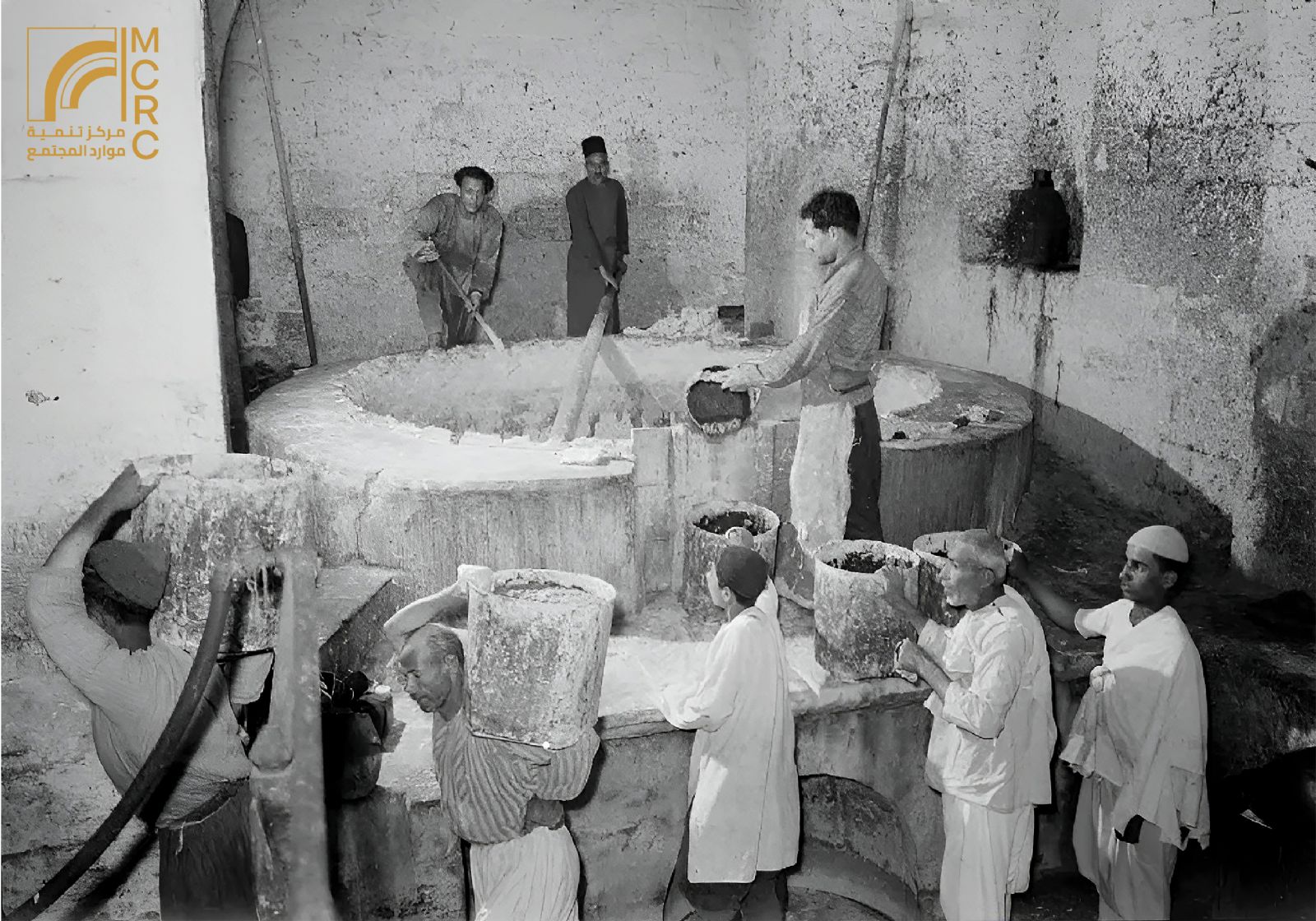
A photo from one of the soap factories showing workers carrying soap mixture in buckets from the cauldron to be poured into a designated area called "Al-Mufresh." The mixture is left there for a period of time to dry before another team of workers continues with the manufacturing stages.
The abundance of olive oil production contributed to creating a suitable environment for soap making in Nablus. Additionally, the widespread presence of public Turkish baths in the city helped sustain this industry and increased demand for it. Historically, Nablusi soap was closely associated with public baths; workers would finish their work in the evening, purchase a piece of soap, and go to one of the baths to wash themselves.
صورة من أحد الصبانات تظهر عمالاً يحملون في دلاء طبخة الصابون من الحلة ليتم سكبها في قسم مخصص يسمى المفرَش، حيث يُترك مدة من الزمن كي يجف قبل أن يقوم فريق آخر من العمال باستكمال مراحل التصنيع.
ساهمت وفرة إنتاج «زيت الزيتون» في توفير بيئة مناسبة لصناعة الصابون في نابلس، كما ساعد انتشار الحمامات التركية العامة في المدينة في استمرار هذه الصناعة وزيادة الطلب عليها، فقد ارتبط الصابون النابلسي قديماً بالحمامات العامة، إذ كان العامل ينتهي من عمله مساء ويشتري قطعة من الصابون ويذهب بها إلى أحد الحمامات ليغتسل.